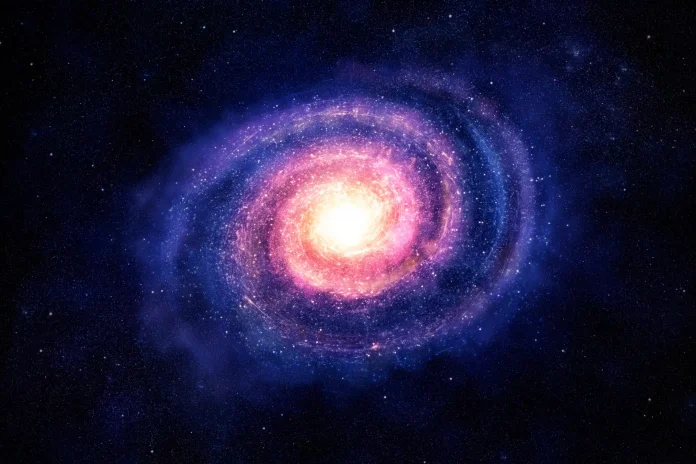Astronomers have made an oldest dead galaxy discovery using the James Webb Space Telescope (JWST). They have identified the oldest “dead” galaxy ever observed, one that stopped forming stars about 700 million years after the Big Bang, over 13 billion years ago. This observation, detailed in the journal Nature, challenges our current understanding of galaxy evolution in the early universe.
Oldest Dead Galaxy Discovery
The newly discovered galaxy, nicknamed JADES-GS-z7-01-QU, appears to have had a short and dramatic life. “The first few hundred million years of the universe was a very active phase,” explains Dr. Tobias Looser, lead author of the study from the Kavli Institute for Cosmology. “Galaxies back then had access to an ‘all-you-can-eat buffet’ of gas clouds for star formation.”
However, JADES-GS-z7-01-QU has gone against the expectations. It went through a burst of star formation lasting only 30 to 90 million years before abruptly shutting down in the 10 to 20 million years leading up to the point it was observed.
The Mystery of “Quenched” Star Formation
Galaxies can stop forming stars due to various factors that deprive them of the gas needed for the process. Internal factors like supermassive black holes or intense stellar winds can expel gas from the galaxy. At the same time, rapid star formation can deplete gas reserves before the surrounding environment replenishes them.
Related: Heaviest Black Hole Pair Ever Found That Could End the World
“We’re unsure if any of these existing explanations apply to what we’ve seen with Webb,” says co-author Professor Roberto Maiolino. “Previously, models for the early universe relied on observations of the modern universe. With its rapid quenching of star formation, this discovery suggests these models may need revisiting.”
The team used data from JADES (JWST Advanced Deep Extragalactic Survey) to analyze JADES-GS-z7-01-QU. This observation is among the deepest ever made by Webb, allowing astronomers to look further back in time than ever before. Notably, this galaxy is the oldest “dead” galaxy observed and one of the least massive – comparable to the Small Magellanic Cloud, a dwarf galaxy orbiting our Milky Way. This is important because previously identified “quenched” galaxies in the early universe were much more significant. Webb’s advanced technology allows for detecting and analysing fainter and smaller galaxies.
A Possible Rising Of Phoenix?
While JADES-GS-z7-01-QU appears inactive at the observation time, it might have reignited star formation roughly 13 billion years ago. “We’re searching for similar galaxies in the early universe to understand how and why galaxies stop forming stars,” says co-author Dr Francesco D’Eugenio. “Some galaxies may experience a ‘death’ followed by a ‘rebirth’ of star formation, but more observations are needed.”
Related: Big Star Formation Secret Of NGC 4654 Galaxy Revealed By Hubble Telescope
This oldest dead galaxy discovery holds critical implications for understanding galaxy evolution and star formation in the early universe. The team’s research, supported by prestigious institutions like the European Research Council and the UK’s Science and Technology Facilities Council, will create the way for further exploration using Webb’s remarkable capabilities. The search for additional galaxies like JADES-GS-z7-01-QU continues, aiming to shed light on the complex and dynamic processes governing galaxy development throughout cosmic history.



